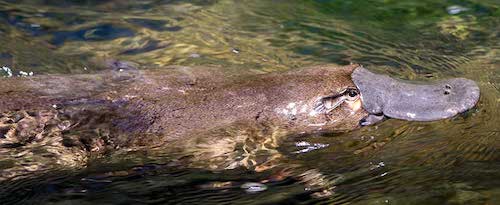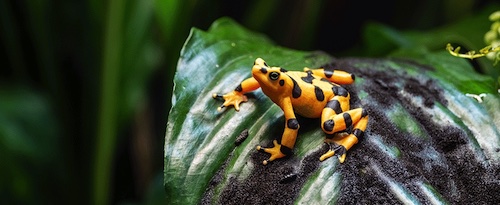
NaturePlus® Standard
The NaturePlus® Standard provides the rules that all projects must comply with to be validated as NaturePlus® Projects and generate NaturePlus® Credits. It also sets out the requirements for the Registry in which projects are listed and credits are issued and transferred.

NaturePlus® Guide
Standards and methodologies are often complex. The NaturePlus® Guide has been developed to help explain how elements of the scheme works and how the scheme interacts with the Accounting for Nature® Framework.

Applicable Methods
NaturePlus® has been designed to work with any method accredited with an Accuracy Level of 90% or 95% under the Accounting for Nature Framework®.

NaturePlus® Claims Guidance
Project proponents, investors and buyers of NaturePlus® Credits should note that making accurate claims about biodiversity credit use is essential. The NaturePlus® Claims Guide has been developed to provide guidance for investors and others looking to make claims around NaturePlus® Projects and NaturePlus® Credit investment.

NaturePlus®
Scheme Review
An independent comparative review of the NaturePlus® scheme by environmental consultancy Pollination. This review benchmarks NaturePlus® against eight existing or emerging global biodiversity schemes.

Knowledge Paper: Using and Making Biodiversity Credit Claims
As the biodiversity credit market expands globally, there are questions around how these credits will fit into reporting frameworks. GreenCollar and award-winning law firm Gilbert + Tobin have drafted a stocktake of current frameworks and next steps.

Report: State of the Voluntary Biodiversity Market
New biodiversity credit schemes are emerging to help bridge the gap between existing levels of funding and the scale of investment required to halt and reverse biodiversity loss. In this report, environmental consultancy Pollination identifies four key design considerations that emerging credit schemes should incorporate and outlines six key areas of development over the next five years.

The Statement of Audit
During this pilot phase, GreenCollar holds the NaturePlus® Registry. Longer term, the Registry will be transferred to an independent external administrator. In the meantime, ERM provides third-party audits of the Registry to ensure accountability for the NaturePlus® Credits generated in this testing phase.
Frequently asked questions
What is a NaturePlus® Credit?
One NaturePlus® Credit represents measured and verified active restoration or conservation of habitat or species across one hectare of a NaturePlus® Project. The degree of improvement in condition generated within a monitoring period is part of the calculation of the restoration unit, so the greater the effort more restoration achieved, the more units that are generated. Each NaturePlus® Credit is delineated using tiers determined by overlap with areas of state, national or international significance for biodiversity and conservation values.

How are NaturePlus® Credits generated and issued?
NaturePlus® Credits are generated only after improvement in environmental condition is confirmed by independently audited environmental accounts and certified by Accounting for Nature®. The NaturePlus® Project Proponent must submit a monitoring report and this must be verified by the NaturePlus® Standard Administrator before the proponent can be issued with credits.
For a NaturePlus® Project to be issued NaturePlus® Credits for restoration activities, the condition of the relevant Environmental Asset at the end of a monitoring period must be greater than 10 under the Accounting for Nature® Framework and exceed the condition at the start of the monitoring period.
To be issued NaturePlus® Credits for conservation activities, the condition of the relevant Environmental Asset at the start of the most recent Monitoring Period must be greater than the project’s conservation threshold.
A NaturePlus® Project can only generate NaturePlus® Credits from conservation activities after it has been issued with NaturePlus® Credits for restoration activities.
Find out more in the NaturePlus® Guide
What type of improvements do NaturePlus® Credits represent?
NaturePlus® projects must apply an Accredited Method with accuracy levels of 90% or 95% under the Accounting for Nature® Standard. GreenCollar’s initial focus has been to apply the Accounting for Nature Native Vegetation Method and a Koala Population and Habitat Condition Method, co-developed with Queensland Trust for Nature and WWF. However, as the scheme expands, we expect to see NaturePlus® Credits generated through Accounting for Nature accredited methods that span diverse ecosystems including native vegetation, fauna, soil, fresh water, and marine ecosystems. Find out more about Accredited Methods here
Who can buy NaturePlus® Credits?
Credits can be purchased by organisations wanting to invest in high integrity environmental units that represent measured outcomes for native ecosystems.
Examples of potential impacts of NaturePlus® Projects include improving populations of threatened and vulnerable species, and improving
habitats and ecosystems.
How is NaturePlus® different to other biodiversity schemes?
NaturePlus® uses the environmental accounting framework provided by Accounting for Nature to establish starting condition and measures improvement in condition over time, in order to generate credits.
NaturePlus® Credits are not payments in advance for activities. Our outcomes-based approach is adaptable to different ecosystems and provides assurance to buyers that the NaturePlus® Credits that the purchase represents are outcomes that have already been achieved.
NaturePlus® also uses a unique continuous crediting model which allows projects to switch from generating NaturePlus® Credits from restoration activities to generating NaturePlus® Credits from conservation activities once an appropriate level of environmental condition has been reached. This is designed to incentivise protection of nature positive gains long-term, and offers the opportunity for long term meaningful partnership between those creating the change on-the- ground through undertaking project activities, and the buyers of NaturePlus® Credits.
Find out more in our review of biodiversity markets co-authored with Gilbert + Tobin here.
Why are schemes like NaturePlus® important to conservation?
Addressing the extinction crisis and biodiversity loss requires significant investment. This includes building high-integrity projects that deliver measurable and verifiable gains for nature, and creating scientifically robust credit schemes that place a value on these services can help scale investment. Through making information about NaturePlus® Projects and NaturePlus® Credits publicly available, NaturePlus® enables investors to identify projects that are delivering real outcomes for nature.
If I purchase NaturePlus® Credits, where does the money go?
When NaturePlus® Credits are sold a large portion of the revenue goes back to the resource managers who are implementing the project on the ground, whether they be farmers, indigenous groups or conservationists. This incentivises continued investment in natural assets, as well as providing an additional source of revenue and economic activity that supports regional and traditional communities.
What is the Accounting for Nature® Framework?
Accounting for Nature® is an independent, not-for-profit organisation that provides a world-leading scientifically rigorous standard to establish condition of environmental assets and create transparent and credible environmental accounts that track whether land management actions are improving or degrading environmental condition. The Accounting for Nature® Framework sets the Standard and Technical Protocols for measuring, monitoring, reporting and verifying ecological health for different environmental assets such as soils, native vegetation, wildlife, rivers and marine systems.
